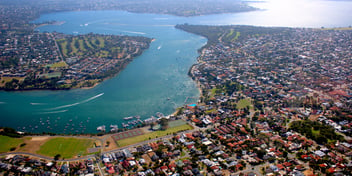Acoustic leak detection reduces burst risk in Perth CBD

In an Australian first, existing telecommunications fibre-optic cable running underground through Perth’s CBD has been transformed into a giant leak detection network with the help of distributed acoustic sensing (DAS) technology.
In a partnership between Water Corporation and Perth-based Terra15 Technologies, the application of DAS offers an innovative approach to finding leaks before they become bursts, reducing the cost of repairs from catastrophic leak events, and saving water and money.
Laser light is pulsed through a thin strand of fibre-optic cable, detecting minute interruptions in the signal due to vibration or sound. While previously used in other industries, this application is programmed to listen for the sound of a leak in nearby water mains.
Water Corporation Manager Asset Performance Ian Gibb said with ears now underground, the utility will be able to focus on ensuring a proactive and cost-effective approach to managing non-revenue water, in particular water loss from the network.
“Non-revenue water is something that’s gaining a lot more attention, especially here in Western Australia where we have a responsibility to our customers and stakeholders to use water efficiently,” he said.
“Half of the water in Perth is supplied from desalination, which has a higher production cost. We don’t want to be losing too much of that product. Our focus is on ensuring there is a prudent, economic level of leakage maintained.
“There is always going to be water loss within the network, so this technology application is all about how much we can minimise it.”
Gibb said some of the cast-iron and steel pipes in Perth’s CBD are in excess of 100 years old, with this ageing infrastructure at higher risk of leading to large and disruptive bursts.
“We are not unique in that sense, there are a lot of city centres with a similar ageing pipe network. We are looking at how we can monitor those pipes in a way to act quickly and prevent catastrophic damage,” he said.
“There will always be leaks and deterioration of pipes, but we are looking at something that can determine or understand what is potentially going to be an imminent big problem.”
Ears underground
Gibb remembers the day Terra15 Technologies demonstrated how DAS technology works: “They explained the technology to me using a sledgehammer,” he said.
“They took the sledgehammer 13kms away, along an existing fibre-optic cable, and hit the ground six times. I could see the sound appear on the screen in the office.”
Water Corporation then collaborated with Terra15 Technologies to trial the approach before bringing it to the Perth CBD.
“For the past three years, Terra15 and Water Corporation have been learning the sounds of the city. We know how to identify what is happening under the footpaths. We know the difference between footsteps or even someone wheeling their luggage. We can also hear machine noises and digging,” Gibb said.
“We have had some minor leaks that the DAS has picked up. More recently, there was one in St Georges Terrace. We were notified that a leak was in progress and were able to identify where the leak was and repair it quickly.”
Terra15 Technologies have developed an automated approach to know the difference between different sounds, and to continuously send this information to Water Corporation, including when leaks may be in progress.
“This information lets us know what is happening in and around our pipes. We receive updates letting us know there is a leakage sound – then we get out on site and undertake detailed leak detection to pinpoint where to dig and repair,” he said.
Big benefits
When it comes to benefits, Gibb said the DAS application will help Water Corporation manage its network maintenance more efficiently and effectively, and reduce disruption to customers and communities.
“It’s about managing our pipes in terms of deterioration when leakage occurs. But it also helps us plan repairs and interruptions to better control traffic and the community’s expectations,” he said.
“We’ve had a couple of incidents where we have planned and undertaken repairs at night time, which if not attended to would have resulted in a potential significant burst which disrupts everything. Reacting to bursts is a lot harder and more expensive especially with reinstatement in the CBD, than fixing them as leaks before they become a burst.”
Generally, due to Western Australia’s sandy ground conditions, a non-visible leak within a distribution network won’t become visible or surface for a year or two, Gibb said, but through this technology the utility can repair leaks more promptly.
“We are now considering including fibre-optic cable in the design of the larger distribution pipe works so we can set up this technology in those locations in future,” he said.
“We are also applying the same approach on a pressure wastewater main that goes through an environmentally sensitive area. We will monitor that pipe the same for any unwanted wastewater releases.”
Gibb said it’s hard to predict the amount of money or water saved from the initiative, as it’s more about responding quickly to prevent what could become a catastrophic burst costing hundreds of thousands of dollars to repair, perhaps even millions.
“It is difficult to quantify, but this technology helps us prevent those types of scenarios,” he said.
“It is still early days, but it’s paying off; we are picking leaks up triggering us to act quickly and pinpoint the leak on site to then schedule the repair more effectively.”


